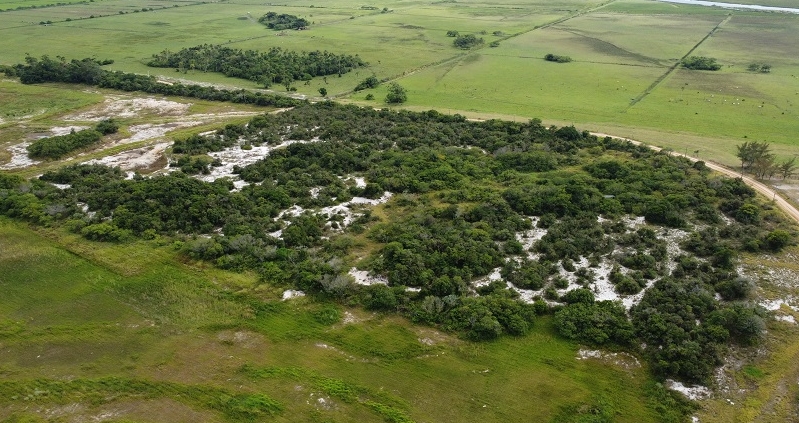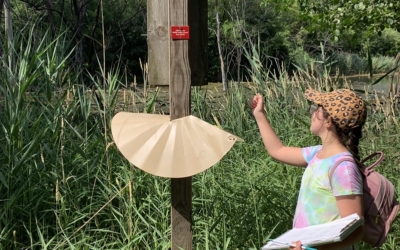Sibelco | Preserving a Unique Coastal Ecosystem in Brazil
Located along the eastern coast of Brazil are several patches of Atlantic coast restinga, a coastal plain forest that often grows on ancient sand dunes. As such, the native vegetation found in this ecosystem is adapted to dry, nutrient-poor soils. Restinga plant life varies vastly — from low-lying bushes and shrubs to towering trees, and the ecosystem is home to several endemic wildlife populations like the pectoral antwren and Bruno’s casque-headed frog. Unfortunately, urban development has led to a 90% decrease of Atlantic coast restingas, which is why mineral solutions company Sibelco is working to restore and preserve this unique ecosystem.
Sibelco’s Unidade Jaguaruna site, located in Santa Catarina, Brazil, is comprised of three silica quarries. The two main objectives of the Unidade Jaguaruna program are to protect the restinga ecosystem and maintain these preserved areas for wildlife. By focusing on four major tenets of habitat needs — food, water, shelter and landscape — Sibelco is supporting the reforestation of the restinga, ensuring water quality and food sources for wildlife and reconnecting forest fragments.
One of the methods Sibelco uses to restore the restinga is nucleation, a process by which segments, or nuclei, of high plant diversity are established by planting various trees and plants of different ecological groups and successional phases in degraded areas. This serves to not only restore degraded areas, but also to reconnect forest fragments. Variation in pollination and dispersion of these plants means that fruits and flowers bloom at different times, consistently attracting both pollinators and seed dispersers.
Removing invasive eucalyptus is another high priority for Sibelco. Eucalyptus was introduced in Brazil to serve as a source of fuel for locomotives and later in the manufacturing of paper. However, this invasive species has since expanded aggressively and is now considered one of the major drivers of deforestation in Brazil, as it prevents native trees from thriving and impacts soil health. Throughout Unidade Jaguaruna, Sibelco targets invasive eucalyptus trees for removal to allow native trees to flourish.
Through monitoring, Sibelco recognized that the lack of natural tree shelter could be limiting the presence of bats that serve as vital seed dispersers. Fruit-eating bats play an important role in reforestation, particularly in degraded areas, as they disperse seeds across the landscape. As a temporary measure until the newly planted trees have reached maturation, Sibelco installed bat shelter boxes near water sources both in the existing forest fragments and in the recovery areas. Similarly, in an effort to support pollinators that will, in turn, support the proliferation of native plants, the team drilled holes in felled eucalyptus trunks to reuse them as solitary bee shelters.
Sibelco performs consistent, rigorous monitoring of these restoration efforts to determine success. By conducting surveys of flora, fauna, avian species, mammals, herpetofauna and more, the team gains a broad understanding of the health of the entire ecosystem. When team members observe that an installed plant has died, they replace it with a new seedling to ensure that species’ success. Monitoring data has shown that, while the area is still in an early phase of regeneration, the conditions have already improved enough to allow for the arrival of new species.
Because of this attention to detail and commitment to supporting species native to the restinga, Sibelco is helping to restore this important ecosystem.
Related Content:
Blogs:
- 5 Creative Ways to Reuse Invasive Species
- What We Learned by Building Insect Hotels
- The Importance of Pollinators
- Three Ways Corporations Can Battle Invasive Species
Webinars
- Beneficiando a las Comunidades y la Naturaleza a Través de la Silvicultura Tropical
- Building Insect Hotels: Enhancing Hospitality for Bugs, Bees and Beetles
- From Tequila to Pest Control: Learn all the Ways Bats are Vital to Ecosystems and Economies
- Assessing the Value and Benefits of Trees: An Intro to i-Tree
- Innovative Approaches to Habitat Regeneration
- Don’t Lose It, Reuse It: Innovative Ways to Use Waste to Create Wildlife Habitat
Project Guidances:
White Papers:
- Nature-based Solutions to Prevent Pollution and Support Biodiversity
- Restoring Ecosystems Through Invasive Species Control
- Enhancing Habitat Connectivity Through Corporate Conservation
- Saving Bats From Decline
Quick Facts
| Site Name: | Unidade Jaguaruna |
|---|---|
| Category: | Member Spotlight |
| Site Location: | Jaguaruna, Santa Catarina, Brazil |
| Partners: | Biocenose Engenharia e Meio Environment, City Hall of Jaguaruna, Escola Basica Municipal Luiza Nicolazzi Gomes, Instituto do Meio Environment de Santa Catarina, Universidade do Sul de Santa Catarina |
| Project Type: | Forests |
| Certification Since: | 2007 |
| Certification Level: | Certified |
| WHC Index Link: | Learn more about the program |


